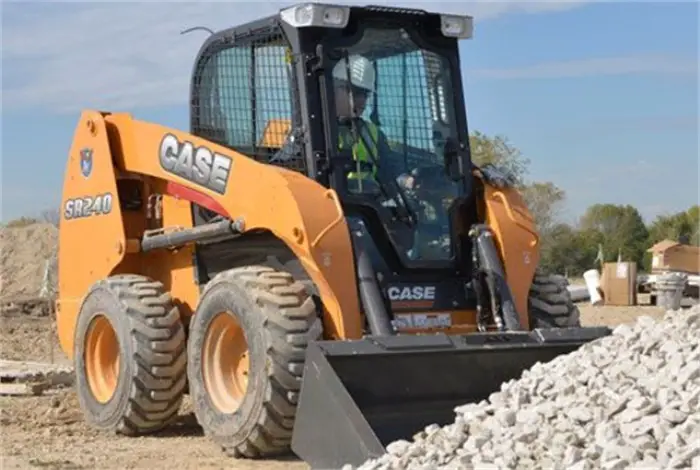A well-maintained skid-steer loader can be one of the most reliable, adaptable and highly productive machines in a beef operation. You can considerably extend the life of your machine by following the manufacturer’s routine maintenance recommendations. Good day by day maintenance can be additionally fortified with a dedication to receiving current on the kits that can boost preventive care and the advanced fluids needed for compact equipment compliancy with the EPA’s emission standards. Here are tips on how to maintain skid-steer loaders
Carry out day by day basics
It’s imperative to take time for day by day visual examinations of the machine and its components and to complete basic measures. Daily maintenance is the sole most significant aspect for general long life of a loader. When done correctly, it can put a stop to the majority of issues. Most manufacturers’ procedure and maintenance handbook and some engine compartment decals offer instruction on day by day fluid-level checks, such as engine oil, hydraulic oil and coolants.
Measurable fluid loss may point out loose hoses, fittings or other possible damage. It’s also vital to make certain that the fluids and filters are changed at scheduled intervals and are operating at appropriate temperatures. As oils and coolants age, their additives break down and start to impact performance. Furthermore, it’s imperative to oil pins and bushings at a manufacturer’s specified intervals to reduce wear on pivot points.
Prepare for the season
Depending on the time of year; plan to take some particular steps in your fluid maintenance plan. Follow these tips for cold weather maintenance of a skid-steer loader
- Choose engine oil viscosity to correspond the estimated temperature range.
- Use low-temperature lubricate for suitable lubrication on pivot points.
- Use fuel rated for colder temperatures. Some regions provide winter fuel that is blended or refined for the region to advance flow.
In hot weather, use these tips to maintain the skid-steer loader
- Choose engine oil viscosity to match the expected temperature range.
- Regularly monitor coolant levels.
- Keep cooling components like the radiator and oil cooler clean to exploit their efficiency.
Treat attachments equal
A skid-steer loader’s attachments are the tools that deliver the adaptability you must move commodities, build fences, cut brush or push snow. Attachments such as augers, grapples, rotary cutters, snow blades and snowblowers ought to have the same concentration as the machine itself.
Visual checks of attachment components such as hoses, cylinders and guards, auger flighting and teeth, cutting blades and edges can notice if wear is budding or damage has happened. Some attachments also need fluid-level checks and lubrication.
Reduce worksite debris
Because beef operations usually handle a noteworthy amount of commodities such as feed, hay silage and bedding, a skid-steer loader is frequently exposed to airborne debris. According to Mike Perry, service manager at Bobcat of Wooster in Ohio, buildup from moving these materials can impact machine performance and engine life.
To additionally reduce problems from this floating debris, some manufacturers provide engine guard kits to improve running time and durability. These kits can offer extra protection for engine compartments with debris screens for radiators, muffler guards and lift cylinder debris shields.
Pair advanced fluids to Tier 4 machines
Skid-steer engines burn cleaner and run hotter. As the EPA’s engine emissions standards are taking effect in the compact equipment industry, equipment vendors must be more well-informed about fuel and oil selection to avert downtime issues. Interim Tier 4 and Tier 4 engines need ultra-low sulfur diesel that burns cleaner in the new exhaust treatment devices and systems designed to lower engine emissions. CJ-4 oil is requisite for these engines as it is put together to trim down ash. Supplementary filters on storage and transfer tanks will also help guarantee clean fluids are used to reduce downtime.
Create good habits
It’s not always suitable to make time for custom skid-steer loader maintenance, it’s worth every minute. You can speed up the process on machines that give quick access to day by day engine checkpoints. Items like easily visible hydraulic sight gauges and reachable grease zerk locations on vital pivot points make it easier to perform oiling procedures. Removable screens and tip-up components also simplify oil cooler and radiator cleaning.
If you keep routine maintenance uncomplicated and become well-informed about industry-leading enhancements, you’ll stay ahead of pricey repairs.

That’s good to know that the skid steer attachments need as much attention as the machines themselves. This is good to let a company know so they can make sure they use them correctly. Plus, this way they can make sure they attachments work correctly on the job.
That’s good to know that you have to choose engine oil viscosity that matches the temperate you’re working in. This is good for a company to know so they can maintain their skid steer attachments all year. Plus, this way they can make sure that it works smoothly in the heat and cold.
I completely agree that doing regular maintenance tasks such as choosing the right engine oil viscosity and fuel for colder temperatures on them can add more to its lifespan. If I want to buy one, I would find a local dealer of skid steers. With their help, one can keep a construction project on schedule.